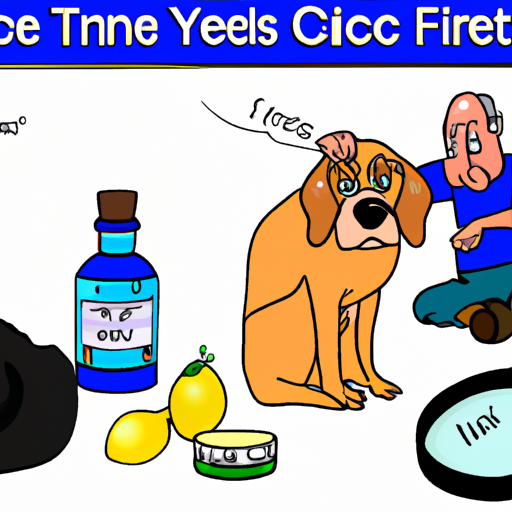As a caregiver, you shoulder the responsibility of ensuring your furry friends are happy and healthy. One of the most common issues dog owners face is the nuisance of ticks and fleas. These pesky parasites are not just annoying, they can pose serious health risks to your beloved pet. But fear not, in this guide, we’ll walk you through the steps to keep your dog tick and flea-free.
Understand the Enemy
To effectively tackle the problem, it’s important to understand what you’re up against. Ticks and fleas are small parasites that feed on the blood of their hosts. They are not only irritating, but can also transmit diseases.
- Ticks latch onto the dog’s skin, embedding their head into the host’s body to feed. They can carry diseases like Lyme disease and Rocky Mountain spotted fever.
- Fleas are agile, jumping up to 100 times their height. They can cause allergic reactions, anemia, and even transmit tapeworms.
Spot the Signs
Keep an eye out for these telltale signs that your dog may be hosting these unwanted guests:
- Excessive scratching, licking, or biting at the skin
- Hair loss
- Scabs or hot spots
- Unusual redness or bumps on the skin
- Flea dirt or actual sightings of the pests.
Choose Your Weapons
There are numerous products in the market to help you combat ticks and fleas. These include:
- Topical treatments
- Oral medications
- Flea and tick collars
- Shampoos and sprays
- Home and yard treatments
| Type | Pros | Cons |
|---|---|---|
| Topical Treatments | Easy to apply, Long-lasting | Can be messy, Not instant |
| Oral Medications | Fast-acting, No mess | Requires prescription, Some dogs may experience side effects |
| Flea and Tick Collars | Long-lasting, Cost-effective | Not as effective for severe infestations |
| Shampoos and Sprays | Immediate relief, Can be used alongside other treatments | Temporary solution, Can be time-consuming |
Execute the Plan
Now that you’re armed with knowledge and tools, it’s time to take action. Remember, it’s not just about treating your dog, but also your home and surrounding areas. Here are the steps:
- Begin by giving your dog a flea bath and thorough brushing.
- Apply the chosen treatment as per the instructions.
- Wash all pet bedding and vacuum your home thoroughly.
- Consider using a home or yard spray to kill any remaining pests.
Prevention is the Best Cure
Once you’ve gotten rid of the ticks and fleas, it’s crucial to prevent future infestations. Regularly check your dog for ticks, especially after walks in wooded areas. Keep your pet on a regular flea and tick preventive regimen, and maintain cleanliness in your home and yard.
Frequently Asked Questions
Q: How often should I treat my dog for fleas and ticks?
A: It largely depends on the product you’re using. Most treatments need to be applied monthly.
Q: Can I use home remedies for flea and tick control?
A: While some home remedies can provide temporary relief, they are not as effective as vet-recommended treatments.
Q: Are ticks and fleas dangerous for humans?
A: Yes, ticks and fleas can bite humans and transmit diseases.
Remember, when it comes to ticks and fleas, an ounce of prevention is worth a pound of cure. Stay vigilant and keep your furry friend safe from these pesky parasites.



